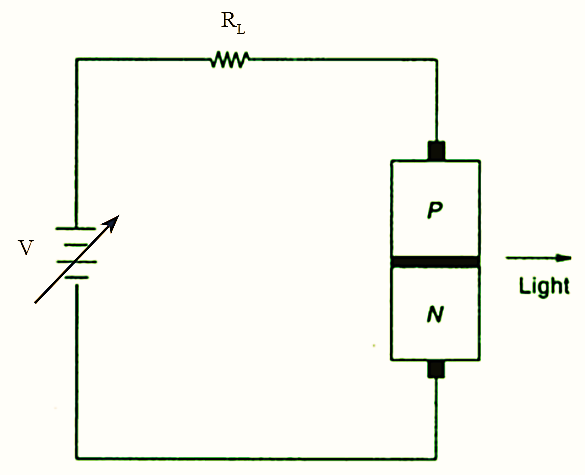LASER diodes are one of the major optical sources, used in the optical communication for light generating purpose. LASER is an acronym for ‘Light Amplification by Stimulated Emission of Radiation’. It is a device that emits light (electromagnetic radiation) through a process of optical amplification based on the stimulated emission of photons. These are used as amplifiers to attain high gain and for avoiding oscillations. In these diodes, the active medium is a semiconductor, which is similar to that in LED. The most common type of a LASER diode is formed from a P-N junction and powered by injected electric circuit. LASER diodes output assures that the beam generated by it is highly directional.
Construction of LASER Diode

Figure 1: LASER Diode.
Figure (1) illustrates the typical structure of commonly used semiconductor laser diode. In figure (1), the layers at PN-junction are positioned in such a way that an active region is formed. This region is responsible for generation of photons using the recombination process. In order to supply an external voltage to the LASER diode, a metal layer is available on the top and bottom layers. However, the crystalline semiconductor sides are sliced to friction as minors at the end of the optical cavity.
Working Principle of LASER Diode

Figure 2.
The operating principle of LASER involves absorption, spontaneous emission, stimulated emission of photons. Consider figure 2(a), which has two energy levels say E1 and E2 where E1 is the ground state level and E2 is the excited state. If a transition occurs between these two states then either of the processes namely absorption or emission may occur. The photon is absorbed by an electron and transits to excited level. But this level is unstable, so electron returns back to the ground-state level by emitting a photon spontaneously as shown in figure 2(b). Sometimes after absorption, the electron still remains in excited level, it can be made to jump to the ground-state level by applying an energy hν, which is known as stimulated emission as shown in figure 2(c).
This emission has two photons, one is absorbed to transit from excited level to ground level and other one is emitted while performing the above process. These both photons maintain in-phase with each other. The characteristics of semiconductor LASER are shown in figure (3). In this process, the strength of radiation pattern obtained can be improved by raising the current and reducing the junction thickness.